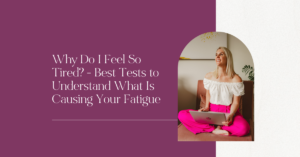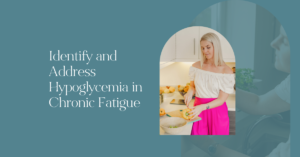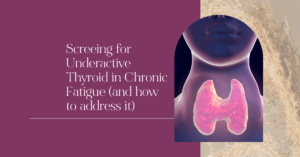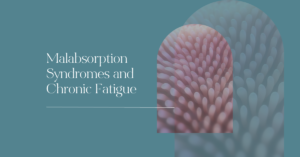This is part 2 of a series on how to support a loved one with a chronic illness such as CFS/ME. The intentions are specifically to:
- Help the loved ones of those experiencing a chronic illness understand how they can be more supportive.
- Help those who are experiencing a chronic illness to communicate their needs better and allow themselves to receive more help and support in the ways that are meaningful to them.
You can read part 1 here I suggest reading all parts in order so if you’ve just arrived here. Head back to part 1 and start there.
Attachment Dynamics
The way we meet our needs (or ignore them) is greatly influenced by childhood experiences and how this shapes our attachment style.
Attachment styles refer to the particular way that individuals relate to each other. Who we attach to as adults and our attachment “style” is mostly, but not always, shaped by the way we were parented and the presence of a regulated care giver. Attachments styles can be secure or insecure.
Insecure attachment styles can be further categorised into:
- Anxious
- Avoidant
- A combination of both, known as a disorganised attachment style.
We develop a secure attachment when our caregivers are regulated and able to meet our mental, emotional and physical needs most of the time. When a baby is born, it will co-regulate with the nervous system of its caregiver and, over time, if its needs are met, it will learn to self-regulate.
No parent is perfect and it is understandable that parents will not be perfectly regulated and available all the time, they just need them to be there for the child more often than not.
In secure attachment, the expression is: I’m okay and you are okay.
There is a positive view of self and others. The individual is usually able to meet their needs internally and externally.
Insecure Attachment
Insecure attachment can happen when our caregivers are unreliable and our emotional, physical and mental needs are unmet more of the time. This is often the result of caregivers who are unable to meet their own needs, regulate their own nervous systems or process their own emotions. The same qualities are then passed down to the next generation and, unless we intentionally take the time to unlearn this behaviour, the cycle continues.
(side note: there are many reasons why a caregiver may be dysregulated and offer poor emotional attunement. It is no one’s fault that this happened. All we can do is our best to break the cycle for generations moving forward.)
Anxious Attachment
In an anxious attachment style, the child learns to cope with the threat of abandonment by clinging to their “attachment object”. This can happen as a child but it can also show up later in adult romantic relationships and even friendships.
This may come across as being “clingy” or “needy”.
The expression is: I’m not okay, but you are okay.
Therefore there is a need to find stability from an external source. There is a negative view of self and positive view of others. In this attachment style, there may be a tendency to meet one’s needs externally, but meeting them internally is more of a challenge.
Avoidant Attachment
In an avoidant attachment style, the child learns to cope by avoiding attachment as a protective mechanism to avoid feeling the pain of abandonment, however, at the same time, they avoid the fullness of being loved and taken care of.
In this attachment style, the individual may be better at meeting their needs internally, but struggle to rely on external sources (outside of their control), to meet their needs.
For example, they may struggle to ask for help and become overly self reliant at their own expense. Although this may not be the case for everyone, I suspect that this is a common pattern for the person experiencing a chronic illness who struggles to ask for help.
Compared to an anxious attachment style, where stability is sourced externally, there is a tendency to go deeper inwards and become highly self-reliant.
The expression is: I’m okay, but you are not okay.
Avoidant attachment style may benefit from softening boundaries, learning to receive, let love in and trust others. This can only be done in a relationship which is able to offer a safe environment to do so which means that all parties in the relationship need to be onboard with the work.
Disorganised Attachment
In disorganised attachment, sometimes the coping mechanism is to move towards and sometimes to move away.
The expression is: I am not okay and you are not okay (which essentially means that nowhere is a safe space).
There can be a deep desire to seek connection with others and at the same time a fear of connection with others. This category is typically associated with risk factors impairing resilience because this person struggles to meet their needs both internally and externally in a functional way.
I suspect that disorganised attachment may also often be present in someone who experiences a chronic illness due to the fact that, of all the attachment style, this one creates the greatest distress for the nervous system and the underlying dysregulation is a predisposing factor for dis-ease.
Attachment Dynamics in the Context of Supporting Your Loved One
Different attachment styles can present in different relationships. For example, you may demonstrate different attachment styles in romantic relationships, friendships and professional relationships.
Attachment dynamics were created in relationships and therefore, it is also in relationships that we heal.
Insecure attachment is healed through healthy relationships that offer consistency, stability and healthy boundaries. Unstable partnerships may exacerbate insecure attachment.
In order for the Supporter to offer consistency, stability and healthy boundaries to the chronic illness experiencer they will need to also have a sense of regulation.
We must keep in mind that the Supporter may have their own insecure attachment that needs supporting and this is why healing is not only the job of the chronically ill but everyone in the relationship.
A few dynamics which night show up are:
Anxious Chronic Illness Experiencer
An Anxious Chronic Illness experiencer may seek safety through others and may find it hard to meet their needs internally. This may be overwhelming for the supporters which may cause withdrawal, interpretted by the anxious illness experiencer as rejection or lack of support, exacerbating distress. The anxious experiencer will benefit from learning to meet their own needs, not so they do not need to rely on others, but so that they can have the best of both; internal and external support.
Anxious Supporter
And Anxious Supporter may need the other person to be okay to feel okay in themselves. This means that the discomfort of the Chronic Illness experiencer may be distressing. To cope with this distress, they may turn to fixing the situation instead of attunement and holding space, which is what most people who responded to my survey said that they wanted more of (see part 1 for details).
Avoidant Chronic Illness Experiencer
An Avoidant Chronic Illness experiencer will probably come across as highly independent and self reliant. They may turn inwards to meet their needs and perhaps have coping mechanisms to avoid their own internal experience. Where they may struggle is asking for help and receiving support that is offered. Withdrawing inwards may exacerbate freeze states of the nervous system and therefore exacerbate feelings of lack of support. The Avoidant Illness Experiencer may want to become more comfortable with their own emotional experience so that they have the capacity to hold space for the vulnerability that comes with asking for help.
Avoidant Supporter
An Avoidant Supporter may easily become overwhelmed by the discomfort of the illness experiencer. They may withdraw into themselves because this is where they feel more safe. This creates a disconnection between the supporter and the supported and the experience is then “lack of support”. The Avoidant Supporter will want to learn to experience the emotional states of others without becoming overwhelmed, this might mean learning to experience their own emotional landscape first.
There are many books, resources and courses available on attachment dynamincs. My intention for this part of the series is to bring the dynamics into your awareness so that you may understand how they are playing out in your ability to receive and offer support.
Stay Tuned
Part of receiving support is to be able to know what we need and to be able to communicate those needs effectively so that our request can be heard and executed. There are a lot of opportunities for things to breakdown and go wrong which is exactly why I will cover communication and needs in part 3 of this series.










